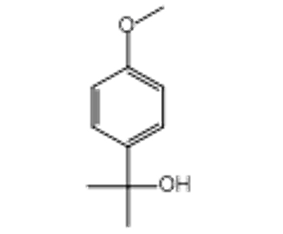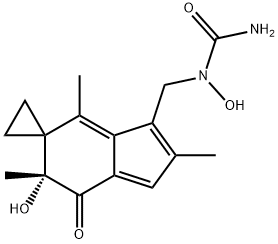2-(4-Methoxyphenyl)propan-2-ol(CAS# 7428-99-1)
Risk and Safety
| Hazard Symbols | F – Flammable |
Introduction
-Chemical formula: C11H16O2
-Molecular weight: 180.24g/mol
-Appearance: White crystalline or powdery solid
-Melting Point: 61-64°C
-Boiling Point: 104-106°C(0.3 mmHg)
-Density: 1.035g/cm3
-Solubility: Soluble in ethanol, acetone, carbon disulfide and other organic solvents
Use:
- 4-methoxy-α,α-dimethylbenzyl alcohol are commonly used as intermediates in organic synthesis and can be used to manufacture chemicals and pesticides.
-It can also be used as a fragrance ingredient to give the product a special smell.
Preparation Method:
A common synthesis method is prepared by alkylation of toluene and methoxycarbonylation under reducing conditions. The specific steps can be slightly as follows:
1. in methyl chloride or dimethylformamide, using aluminum chloride as catalyst for toluene alkylation reaction, the synthesis of benzyl chloride. The reaction is usually carried out at low temperature.
2. the synthesized benzyl chloride and methanol are reacted, and lithium aluminum cyanide is used as a catalyst for methoxycarbonylation to generate 4-methoxy-α,α-dimethylbenzyl alcohol.
Safety Information:
4-methoxy-α,α-dimethylbenzyl alcohol low toxicity, but the following safety measures should be paid attention:
-Avoid inhalation, skin contact and ingestion.
-Wear protective gloves, safety glasses and protective mask during operation.
-During operation, it should be carried out in a well-ventilated place.
-In case of contact with skin or eyes, rinse immediately with plenty of water and seek medical help.
-Avoid contact with substances such as strong oxidants.
Please note that this information is for reference only. Laboratory safety procedures and relevant regulations should be followed when handling or using this compound.








